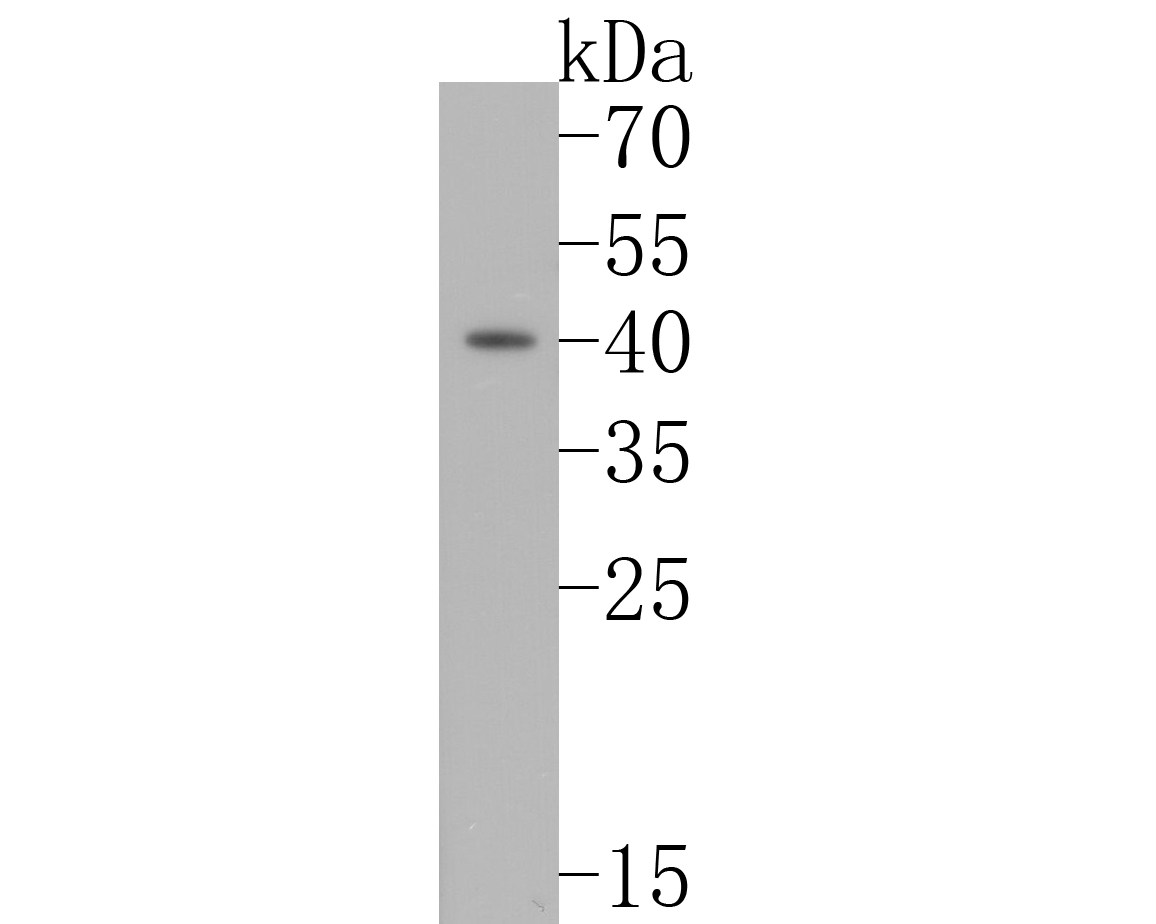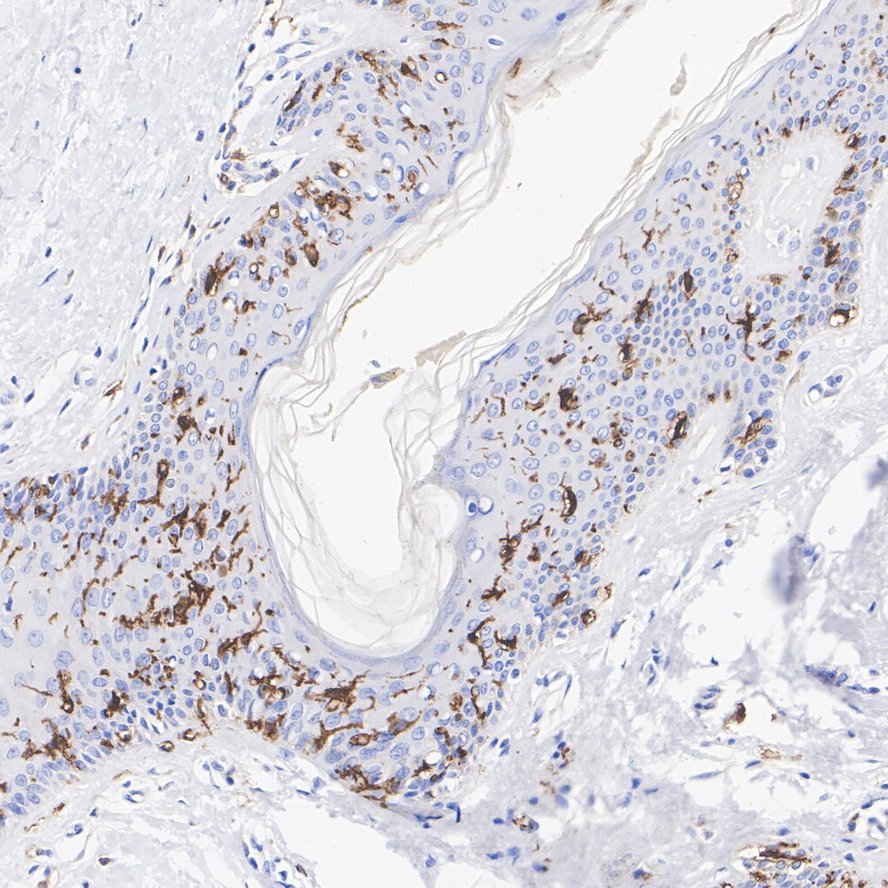CD1a Mouse Monoclonal Antibody [A3F9]

cat.: EM1901-89
| Product Type: | Mouse monoclonal IgG1, primary antibodies |
|---|---|
| Species reactivity: | Human |
| Applications: | WB, IHC-P |
| Clonality: | Monoclonal |
| Clone number: | A3F9 |
| Form: | Liquid |
| Storage condition: | Shipped at 4℃. Store at +4℃ short term (1-2 weeks). It is recommended to aliquot into single-use upon delivery. Store at -20℃ long term. |
| Storage buffer: | 1*PBS (pH7.4), 0.2% BSA, 50% Glycerol. Preservative: 0.05% Sodium Azide. |
| Concentration: | 2ug/ul |
| Purification: | Protein G affinity purified. |
| Molecular weight: | Predicted band size: 37 kDa |
| Isotype: | IgG1 |
| Immunogen: | Recombinant protein within human CD1a aa 50-250. |
| Positive control: | K562 cell lysates, human skin tissue. |
| Subcellular location: | Cell membrane, endosome membrane, membrane raft. |
| Recommended Dilutions:
WB IHC-P |
1:500-1:1,000 1:1,000 |
| Uniprot #: | SwissProt: P06126 Human |
| Alternative names: | CD 1a CD1 CD1a CD1A Antigen CD1A antigen, a polypeptide CD1a molecule CD1A_HUMAN cluster of differentiation 1 A cortical thymocyte antigen CD1A differentiation antigen CD1 alpha 3 epidermal dendritic cell marker CD1a FCB 6 FCB6 HTA 1 HTA1 hTa1 thymocyte antigen OTTHUMP00000018907 R 4 R4 T 6 T-cell surface antigen T6/Leu-6 T-cell surface glycoprotein CD1a T6 |
Images

|
Fig1: Western blot analysis of CD1a on K562 cell lysates. Proteins were transferred to a PVDF membrane and blocked with 5% BSA in PBS for 1 hour at room temperature. The primary antibody (EM1901-89, 1/500) was used in 5% BSA at room temperature for 2 hours. Goat Anti-Mouse IgG - HRP Secondary Antibody (HA1006) at 1:5,000 dilution was used for 1 hour at room temperature. |

|
Fig2:
Immunohistochemical analysis of paraffin-embedded human skin tissue with Mouse anti-CD1a antibody (EM1901-89) at 1/1,000 dilution. The section was pre-treated using heat mediated antigen retrieval with Tris-EDTA buffer (pH 9.0) for 20 minutes. The tissues were blocked in 1% BSA for 20 minutes at room temperature, washed with ddH2O and PBS, and then probed with the primary antibody (EM1901-89) at 1/1,000 dilution for 1 hour at room temperature. The detection was performed using an HRP conjugated compact polymer system. DAB was used as the chromogen. Tissues were counterstained with hematoxylin and mounted with DPX. |
Note: All products are “FOR RESEARCH USE ONLY AND ARE NOT INTENDED FOR DIAGNOSTIC OR THERAPEUTIC USE”.